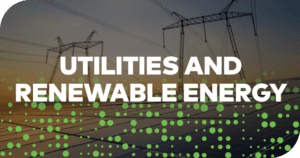Commodity Trading Strategies Beginners Need to Know

Investing has long been used as an effective way to build wealth outside of a 9-5, but it isn’t always for the faint-hearted. Investors are often looking for ways to diversify their portfolios and enter new markets. Some options may include real estate investing, foreign exchange, or one of the many cryptocurrencies available.
For many, commodity trading is a great opportunity. If you are interested in getting started with commodity trading, you will need to know some key commodity trading basics to ensure your success in this unique market.
As with most endeavors, preparation is the key to success. Many successful commodity traders rely on detailed and timely analytics from DTN. They rely on some key strategies as well.
When pairing these strategies with reliable data, you are ready to get started using commodities trading to build wealth. To begin with, though, it is important to understand how commodities trading works.
What is commodities trading?
Simply put, commodities trading is the sale and trade of physical commodities (goods or raw materials.) But these are rarely physical transactions. In general, there are three types of commodity trading, each with its own advantages.
Futures contracts are an agreement to purchase or sell a commodity, at a fixed price, at a later date. If you believe the price of a commodity will increase, you can “go long.” To “go long” means entering into a futures contract to buy the commodity at a fixed price that is lower than it will be at the end of the contract’s expiry.
In this case, you would net the difference in prices. Businesses who use certain commodities, like farmers and oil producers, often use futures contracts to lock in stable prices for products they will need in the future.
Exchange-Traded Funds (ETFs) function similarly to stocks. Instead of trading the physical commodities, these ETFs deal with a collection of securities backed by a commodity. Some examples are precious metals like gold and silver or natural gas and crude oil.
Contracts for Difference (CFDs) are an agreement between a broker and an investor to exchange the cost difference between the opening and closing of the contract. This type of trade allows an investor to bet on the rising and falling market prices without ever physically owning the commodity. CFDs are banned in the US, Brazil, and Belgium and are subject to various restrictions in other countries as well.
Because both futures contracts and contracts for difference are riskier, they are better suited for experienced traders. And because leveraging is very common with commodity trading, losses can grow exponentially if you aren’t careful.
3 Commodity trading basics every beginner should know
There is no doubt that developing a winning strategy for commodity trading takes a lot of research and timely analysis. Before you are ready to get started, there are three basic rules you should understand about commodity trading:
1. Commodity trading is seasonal
Commodity markets are much more directly related to supply and demand than stocks, and as such, tend to be very seasonal. The supply of soft commodities like corn and wheat follows the harvesting cycle. The demand for commodities such as oil and gas tends to rise in the fall going into winter and drop in the spring going into summer.
2. Learn and follow market trends
Learning bull and bear market trends is especially helpful when trading commodities. It isn’t for nothing that the expression, “the trend is your friend” is popular among commodity traders. It is generally better to bet in line with the trend, whether the market is bullish (prices rising) or bearish (prices falling). Of course, no trend will last forever, so understanding the market psychology and activity will help you decide what to do depending on the trend.
3. Take the time to find your niche
Commodity trading tends to lend itself to niche markets, meaning that the most successful traders often stick to one commodity or niche. That reasoning becomes clear when you consider different commodities like precious metals and corn, for example.
These commodities will have widely different market trends and other factors influencing their prices. Instead of trying to understand both markets, it is better to focus on one. That way, you can understand, and learn to increase, your chances of success.
The importance of research in commodity trading
If you have experience with the stock market, you likely understand the importance of market research. The same is true with commodity trading — the amount and quality of your research and data analysis can make or break your investment.
Market platforms offer current and breaking news on commodity markets that can be instrumental in keeping up with current trends. There are also numerous reports on agricultural and energy markets available from government agencies like the USDA and EIA.
What you’ll often find when completing market research, though, is that there is almost too much data available. It can be challenging to keep up with everything as there are always more data points to analyze. This data obsolescence is especially the case with commodity trading, as success lies largely in timing.
The reliable and timely analytics offered by DTN gives commodity traders an advantage, allowing them to stay ahead of the competition. With detailed reports, historical data, and real-time analysis, you will be better prepared to succeed. Learn more about DTN ProphetX and the host of services they offer to see how they can help you today.










 Comprehensive weather insights help safeguard your operations and drive confident decisions to make everyday mining operations as safe and efficient as possible.
Comprehensive weather insights help safeguard your operations and drive confident decisions to make everyday mining operations as safe and efficient as possible. Learn how to optimize operations with credible weather and environmental intelligence. From aviation safety to environmental compliance, our comprehensive suite of solutions delivers real-time insights, advanced forecasting, and precise monitoring capabilities.
Learn how to optimize operations with credible weather and environmental intelligence. From aviation safety to environmental compliance, our comprehensive suite of solutions delivers real-time insights, advanced forecasting, and precise monitoring capabilities.